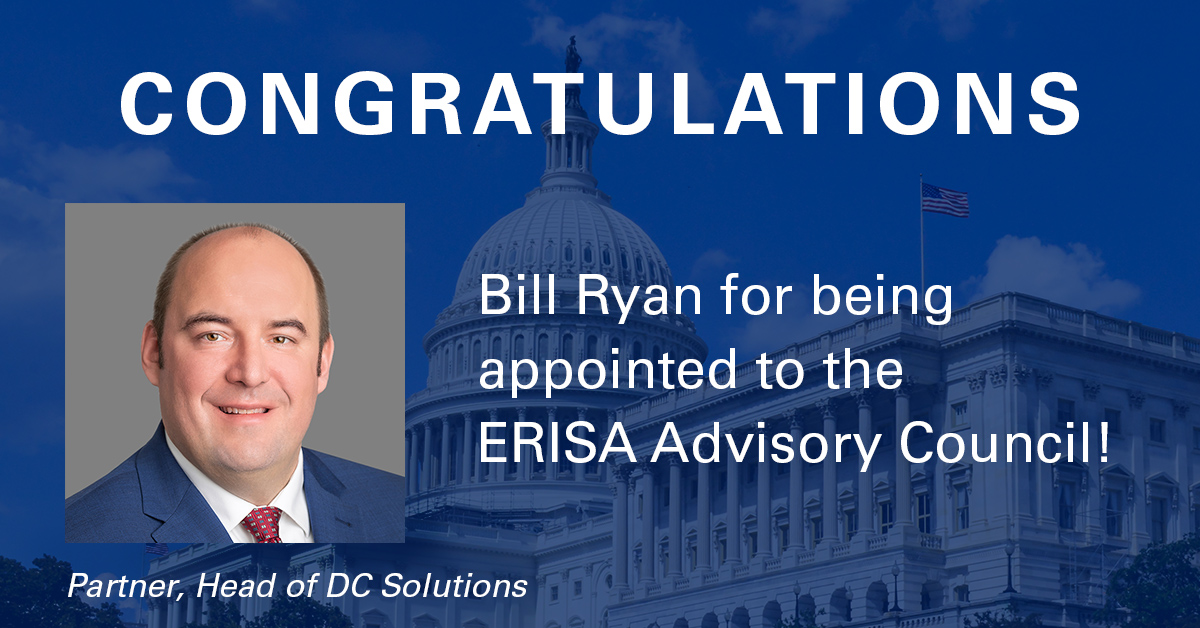Pensions & Investments: Named Trailblazers, 20 Chicago Women are Setting the Pace for Improving Diversity
NEPC’s DeAnna Ingram Jones, president of the Chicago chapter of the National Association of Securities Professionals (NASP), was quoted by Pensions & Investments discussing the 20 women honored by the organization as trailblazers for advancing diversity within the industry. View the article on Pensions & Investments’ site here.
“They manage multibillion-dollar pension funds and portfolios for top asset management firms and work closely with clients across the nation as investment advisers, to describe just a few of their careers.
But the 20 women recently honored as trailblazers by the Chicago chapter of the National Association of Securities Professionals share one common mission: improving diversity in the financial services industry.”
. . .
“These women are not only trailblazers in their careers, but they are using — and have used — their platform and their reach to encourage diversity in our industry,” said DeAnna Ingram Jones, a consultant at NEPC and president of the Chicago NASP chapter. “As these women lay this foundation for diversity, what we hope is that all the next generation of diverse financial professionals find their perfect self in our our industry,” she added.
Click here to continue reading the full Pensions & Investments article.
CBS News: Author and Investor Sarah Samuels Talks New Book on Managing Money at Early Age
NEPC’s Sarah Samuels spoke with CBS News about her new children’s book, “Braving Our Savings”. Watch the segment below:
Pensions & Investments: Record Keepers Turning to Smaller Plans to Fuel Growth After Big 2023
NEPC’s Bill Ryan was quoted in a recent Pensions & Investments article to discuss record keeper outlook for the market. View the article on Pensions & Investments’ site here.
“Surging stock and bond markets propelled record keepers’ record performance last year, but what can the industry do for an encore?
Consultants and researchers acknowledged the markets’ impact last year boosted assets under administration, but they said record keepers will need more consistent sources of future growth.
They predict more consolidation among record keepers, more educating sponsors to adopt auto enrollment, greater emphasis on keeping participants’ assets in plans and accelerated efforts in pursuing startup and smaller DC plans.”
. . .
“The M&A game isn’t over,” said Bill Ryan, partner and defined contribution team leader at NEPC. “I wouldn’t be surprised if three of the top 15 record keepers are acquired in the next 18 months.” He didn’t offer names.
“Organic growth for participants will be modest,” he added. Among the top 15 record keepers by participants in the latest annual Pensions & Investments survey, for example, five had headcounts that were down or flat from the previous survey.
Among record keepers responding to the P&I survey, almost all had higher assets under administration in 2023, but Ryan said he believes this thin-margin business will take its toll on some providers as competition causes a continued whittling of record-keeping fees.
Click here to continue reading the full Pensions & Investments article.
Pensions & Investments: How the Presidential Election Could Impact Renewable Energy Investing
NEPC’s Larissa Davy and Matthew Ritter were quoted in a recent Pensions & Investments article to discuss how NEPC is thinking about the broader implications of the election on portfolio construction. View the article on Pensions & Investments’ site here.
“Asset managers and consultants are closely watching how the U.S. presidential election could impact renewable energy investing.
Those with a focus on the sector are trying to discern whether politics around, and specific economic incentives borne out of, the Inflation Reduction Act and its myriad tax credits for clean energy will change after the November election.”
. . .
Regardless of what happens in November, managers and consultants who focus on renewables and infrastructure broadly said they are bullish on its future.
While a Trump win would be a shift for energy sector, “infrastructure as a whole has had a lot of bipartisan support, so I would be surprised if there weren’t good opportunities in infra going forward, and it’s hard to deny that no matter who’s in power,” said Larissa Davy, senior investment director of real assets at NEPC.
Her colleague Matt Ritter, partner and head of real assets Investments at NEPC, said the potential political and regulatory risk is something the firm is taking into account in its underwriting.
“The strategies that we’re recommending and looking at we believe are viable even if there were to be political or regulatory change,” Ritter said. “That’s not to say necessarily that every asset out there is in the same position, but we’re very focused on strategies that are not reliant on those subsidies or those sorts of programs to be viable.”
Even if the IRA tax credits were rolled back under a second Trump administration or Republican Congress, there are still viable investments in the renewable space, according to Davy.
“A fund investing today in renewable power is not going to suddenly not be profitable if Trump was to win this year going forward,” she said. “Over the long term that could change, but certainly that would have to be a consistent repeal of some of these types of policy agreements, like the IRA, over a 10-year term.”
Click here to continue reading the full Pensions & Investments article.
Boston 25 News: NEPC's Sarah Samuels Discusses Her Children's Book 'Braving Our Savings'
NEPC’s Sarah Samuels spoke with Boston 25 News Anchor Vanessa Welch about her new children’s book, “Braving Our Savings”. Watch the segment below:
Pensions & Investments: Mikaylee O'Connor Joins NEPC as Head of Defined Contribution Solutions
NEPC was featured in a recent Pensions & Investments article to highlight our latest Principal hire, Mikaylee O’Connor. View the article on Pensions & Investments’ site here.
Mikaylee O’Connor has joined investment consultant NEPC as principal and head of defined contribution solutions effective April 1, succeeding partner Bill Ryan who has been promoted to defined contribution team leader, a new position.
. . .
At NEPC, “I will be delving more into marketplace solutions,” she said. “I will be more directly involved with clients.”
She identified retirement income solutions, the impact of technology on plan management and plan governance as three areas of interest. Technology, for example, can be used to “better customize solutions” and can “improve participant engagement and outcomes,” she said.
Click here to continue reading the full Pensions & Investments article.
FIN News: NEPC Hires DC Solutions Head
NEPC’s Mikaylee O’Connor was featured in a recent FIN News article highlighting her new role as Head of Defined Contribution Solutions. View the article on FIN News’ site here.
Mikaylee O’Connor has joined investment consultant NEPC as principal and head of defined contribution solutions, the firm announced.
O’Connor will lead NEPC’s defined contribution practice and also oversee its defined contribution plan trends research and data analytics, guiding strategic initiatives related to managed accounts, retirement income solutions, target date funds and other investments, according to the firm.
. . .
“As a team, we are focused on helping our clients navigate and lead the discussion around issues relating to retirement income,” [Bill] Ryan said, in a statement. “Mikaylee’s extensive experience and deep expertise working with a diverse client set will position NEPC to continue identifying innovative solutions that help alleviate those concerns.”
NEPC has $1.6 billion in assets under management and advisement, according to the firm.
PlanSponsor: Gen Z Employees Show Affinity for Increased Personalization in TDFs
NEPC’s 2023 DC Plan Trends & Fee survey results were quoted in a recent PlanSponsor article which discusses how Gen Z employees exhibit a preference for heightened personalization in Target Date Funds (TDFs), emphasizing the importance of tailored investment options for this demographic. View the article on PlanSponsor’s site here.
Young 401(k) participants were the most likely to share personal information to help tailor their retirement investments to their needs and goals, according to new Cerulli data.
. . .
“Cerulli also found that 45% of TDF managers surveyed already allow participants to transition from a TDF to a managed account at a specific threshold, such as age or account balance. A recent NEPC survey found that while 43% of plans offer managed accounts and fees have come down by about 20% to 40% over the second half of 2023, only 5% of participants use the accounts.”
Read the full article on Plan Sponsor’s website here.
Pensions & Investments: DC Plans Wrestle with Cost, Complexity and Other Concerns when Considering In-Plan Retirement Income Solutions
NEPC’s Bill Ryan was quoted in a recent Pensions & Investments article to discuss in-plan retirement solutions and how the data from our 2023 DC Plan Trends & Fee survey supports his solution. Excerpts from the article are shown below. View the article on Pensions & Investments’ site here.
Despite benefiting from regulatory and commercial advances designed to make in-plan retirement solutions more attractive, defined contribution executives continue to wrestle with concerns about cost and complexity as well as compatibility among employers and record keepers.
. . .
To consultant William Ryan, the solution to an in-plan solution is hiding in plain sight: a target date series with a systematic distribution of assets upon retirement.
Ryan is a partner and head of defined contribution plan solutions at NEPC, which recently released an annual survey on DC plan trends and fees showing that people over 65 hold 45% of their assets in target-date funds. Among that age group, 68% have retired or left their employers.
“Unfortunately, only 26% have activated systematic distributions, but 26% is wildly greater than the 4% to 5% who annuitize,” Ryan said.
. . .
The words “retirement income” or “lifetime income” are subject to different interpretations, Ryan added. To NEPC, the words retirement income simply mean “getting money out of the plan to fund a paycheck,” he said. “It doesn’t need to mean guaranteed and it probably shouldn’t mean guarantee, insured, or annuity.”
However, “lifetime income” has become a synonym for “guaranteed income” — words that are “creatively interchanged by insurance companies,” he said.
“This is why we at NEPC think the industry has communicated the success and objective of retirement income very wrong,” Ryan added. “The narrative has become hyperfocused on needing to add commercial insurance to DC plans, when most participants are entitled to government retirement insurance via Social Security, and some get employer retirement insurance via a pension plan.”
Click here to continue reading the full Pensions & Investments article.
Pensions & Investments: DOL Names New ERISA Advisory Council Members, Chair
NEPC’s Bill Ryan was mentioned by Pensions & Investments for his appointment by the Department of Labor to the ERISA Advisory Council. Excerpts from the article are shown below. View the article on Pensions & Investments’ site here.
“The Department of Labor appointed five members to its ERISA Advisory Council…”
. . .
The council’s new appointees, who will each serve three-year terms, are:
- William E. Ryan III, head of defined contribution for investment consultant, NEPC
- Anusha Rasalingam, a partner at law firm Friedman & Anspach
- Charles B. Wolf, a retired shareholder of law firm Vedder Price who teaches employee benefits law at the University of Chicago Law School
- Regina T. Jefferson, a law professor at the Catholic University of America, Columbus School of Law
- Kathleen McBride, an accredited investment fiduciary analyst, and founder and president of FiduciaryPath
Click here to continue reading the full Pensions & Investments article.









